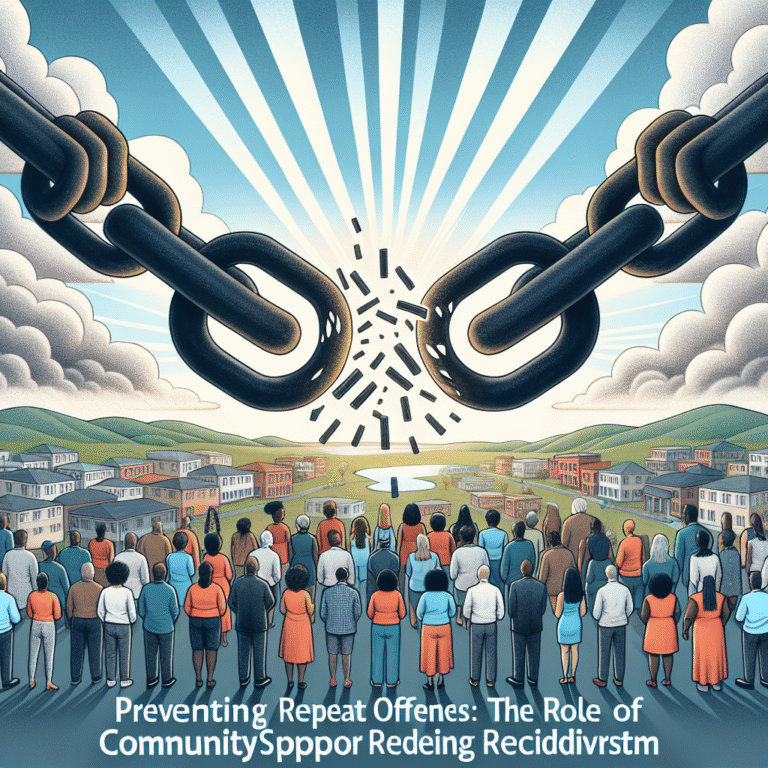
Introduction
In today’s interconnected world, technology offers remarkable opportunities for communication, commerce, and creativity. Yet, it also paves the way for a new breed of crime: cybercrime. As we navigate this digital landscape, we must engage with the complexities of victimization in the online realm. This article aims to unpack the essence of Victimology in the Digital Age: Navigating Cybercrime and Its Victims, delving into its nuances, challenges, and the resilience found in the face of adversity.
Understanding Victimology in the Digital Age
What is Victimology?
Victimology is the study of victims and the psychological effects of their victimization. As we transition into the digital era, understanding victimology becomes increasingly vital. The traditional paradigms must adapt to include cybervictims—those who suffer due to online crimes.
The Shift to Digital Victimization
The digital landscape fundamentally alters the nature of victimization. Unlike physical crimes that happen in a specific location, cybercrime knows no bounds. A hacker in one country can target an entity in another, creating a global network of potential victims.
Major Forms of Cybercrime
- Identity Theft: The unauthorized use of personal information to commit fraud.
- Cyberbullying: Harassment and bullying conducted through digital platforms.
- Phishing: Deceptive practices used to gain sensitive information.
- Malware Attacks: Malicious software designed to disrupt, damage, or gain access to data.
Case Study: The Target Data Breach
In 2013, Target suffered a massive data breach that compromised the credit card information of 40 million customers. This incident illustrates not only the severity of cybercrime but also highlights the vulnerability of consumers in the digital age. The aftermath saw the company facing lawsuits, and consumers losing trust in a major retailer.
Relevance: This case underscores the need for robust cybersecurity measures and comprehensive victim support systems.
The Psychological Impact of Cybercrime Victimization
The Emotional Toll on Victims
The psychological implications of cybercrime cannot be understated. Victims often experience anxiety, depression, and a pervasive sense of vulnerability. The lack of physical presence in cybercrime can exacerbate feelings of isolation and helplessness.
The Role of Support Systems
Having a strong support system becomes crucial for victims. They need empathetic listening, validation, and access to resources. Mental health professionals can play a pivotal role in providing strategies for rebuilding self-esteem and fostering resilience.
Case Study: The Impact of Cyberbullying on Adolescents
A poignant example of emotional toll stems from a high-profile case of cyberbullying that led to tragic outcomes for multiple adolescents. This scenario emphasizes the dire need for educational institutions and parents to intervene and offer preventive support.
Relevance: As victims navigate the emotional consequences, understanding their plight through the lens of victimology enables better-targeted interventions.
Legal Framework and Resources Available
Existing Laws and Regulations
As we traverse through Victimology in the Digital Age: Navigating Cybercrime and Its Victims, it is critical to understand the legal frameworks designed to protect cybercrime victims. Laws, such as the Computer Fraud and Abuse Act, provide a foundation for addressing these offenses.
Initiatives for Victims
Numerous organizations work tirelessly to support victims of cybercrime:
- The Cybercrime Support Network (CSN): Offers resources and guidance for victims.
- Victim Assistance Programs: Many local law enforcement agencies provide services to help victims regain control over their lives.
Case Study: The FBI’s Internet Crime Complaint Center (IC3)
The IC3 has been instrumental in collecting data on cybercrime and assisting victims in reporting incidents. It has successfully helped numerous victims recover stolen funds and provided them with vital knowledge.
Relevance: This showcases the vital role that legal frameworks and organizations play in victim recovery and support.
Preventive Measures: Empowering Potential Victims
Cyber Hygiene Best Practices
Being proactive in protecting oneself online can significantly reduce the chances of victimization. Here are some essential practices:
- Regularly Update Passwords: Use strong, unique passwords for different accounts.
- Enable Two-Factor Authentication: This adds an extra layer of security.
- Educate Yourself about Phishing Scams: Knowing what to look for can prevent falling victim to scams.
Digital Literacy Programs
Schools and community organizations play an essential role in educating individuals about online safety. Digital literacy programs equip participants with the understanding and skills needed to navigate the digital landscape safely.
Case Study: New Jersey’s Cyber Safety Initiative
New Jersey implemented a comprehensive cyber safety initiative aimed at schools, instructing students on online ethics, privacy, and security. This proactive approach resulted in a notable decrease in reported cyberbullying incidents.
Relevance: Proactive engagement is crucial in reducing victimization rates.
The Role of Technology in Victim Support
Innovative Solutions
Technology plays a dual role in victimology. On one hand, it enables cybercriminals; on the other, it provides innovative solutions for victim support:
- Chatbots and AI for Counseling: Virtual support services can offer immediate guidance to victims.
- Data Analysis for Crime Prediction: Advanced algorithms can help anticipate cybercrime trends, thus protecting potential victims.
Collaboration Between Tech Companies and Authorities
Fostering collaborations between tech companies and law enforcement can bolster victim support systems. Together, they can create safe environments for individuals in the digital sphere.
Case Study: Microsoft’s Digital Crime Unit
Microsoft’s Digital Crime Unit collaborates with law enforcement around the globe to combat cybercrime. Their efforts in creating secure platforms for victims exemplify the potential of technology in enhancing victimology.
Relevance: Such partnerships can lead to impactful strategies for both prevention and recovery.
Conclusion
The intersection of victimology and cybercrime reveals a world rife with challenges, yet also filled with opportunities for growth and resilience. By spreading awareness of Victimology in the Digital Age: Navigating Cybercrime and Its Victims, individuals can learn how to protect themselves, seek help, and empower others.
In a universe interconnected by technology, it is our collective responsibility to foster a secure environment for all. Let us focus on educating, supporting, and engaging to diminish the effects of cybercrime and uplift its victims.
FAQs
1. What is the most common type of cybercrime affecting victims today?
Answer: Identity theft remains one of the most prevalent forms of cybercrime, where personal information is stolen and misused, leading to financial and emotional distress for victims.
2. How can individuals protect themselves from becoming victims of cybercrime?
Answer: Implementing robust password strategies, using two-factor authentication, and being vigilant against phishing attempts are key preventive measures.
3. What resources are available for victims of cybercrime?
Answer: Organizations like the Cybercrime Support Network and the FBI’s IC3 provide resources, reporting mechanisms, and support services for victims.
4. How can I report cybercrime effectively?
Answer: Victims should document all relevant details and report the crime to local law enforcement, as well as online platforms like IC3 for further investigation.
5. What role does government legislation play in cybercrime victim support?
Answer: Legislation such as the Computer Fraud and Abuse Act outlines legal protections for victims while also penalizing perpetrators, fostering a safer digital environment.
In understanding and addressing Victimology in the Digital Age: Navigating Cybercrime and Its Victims, we journey toward a future that harnesses the best of technology while minimizing its threats.















